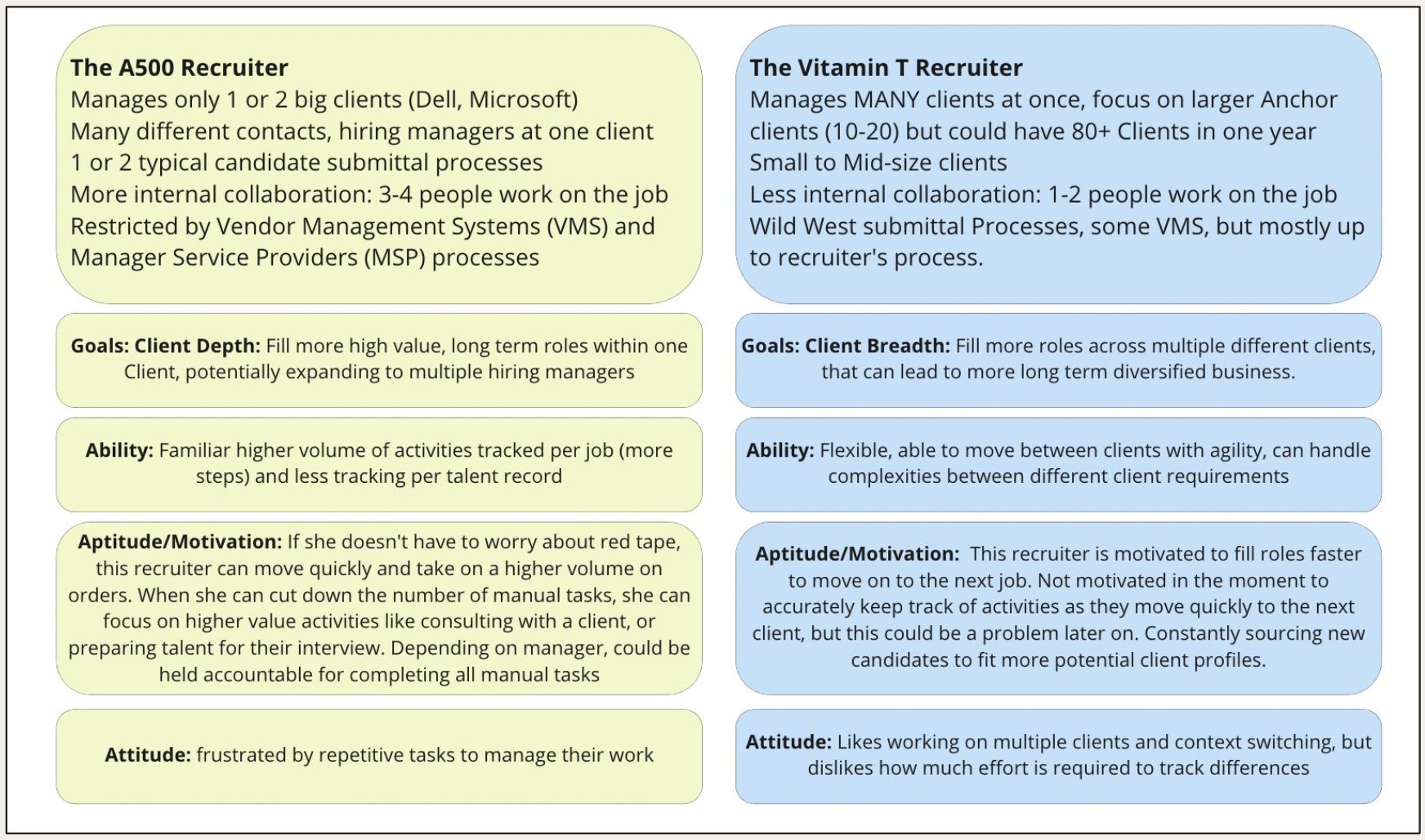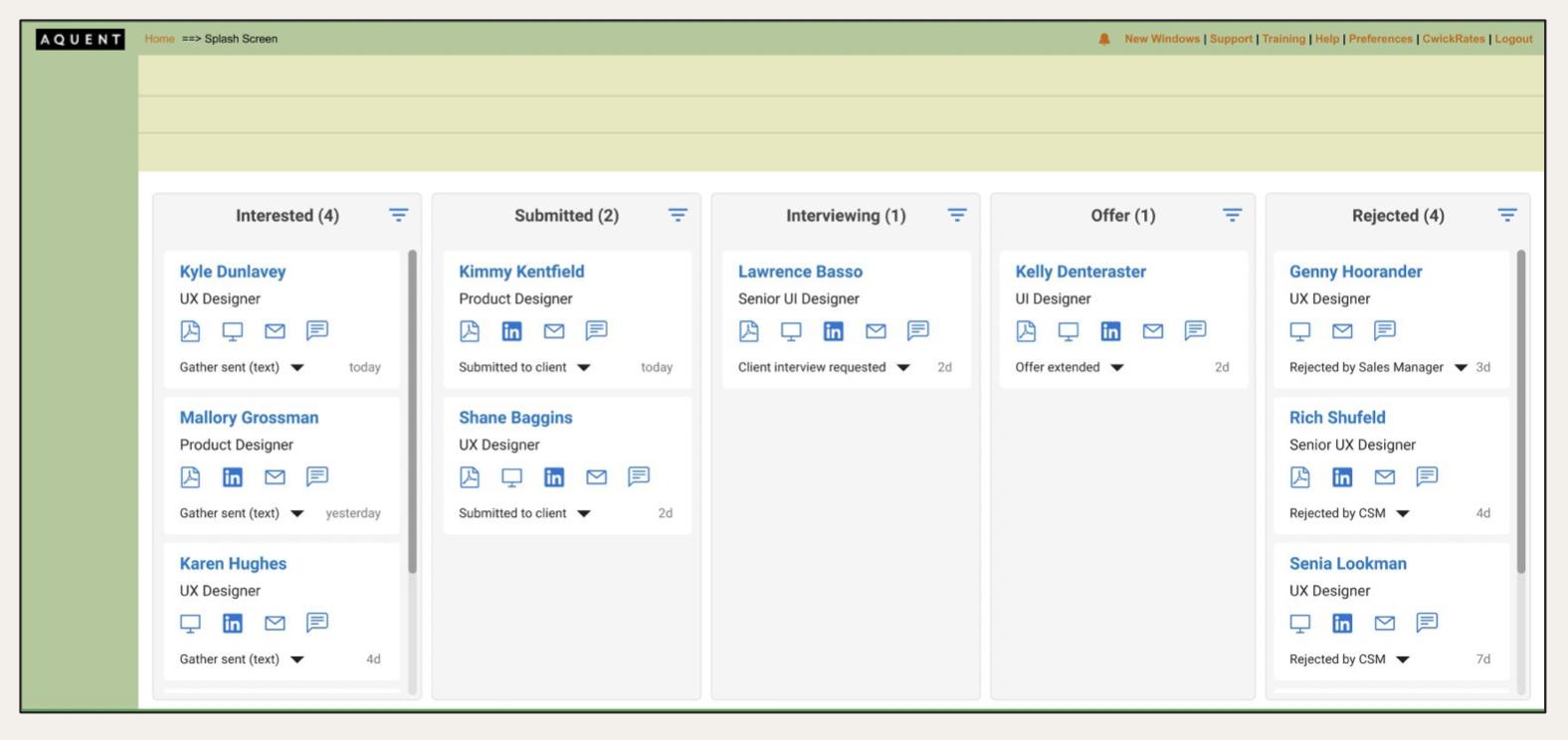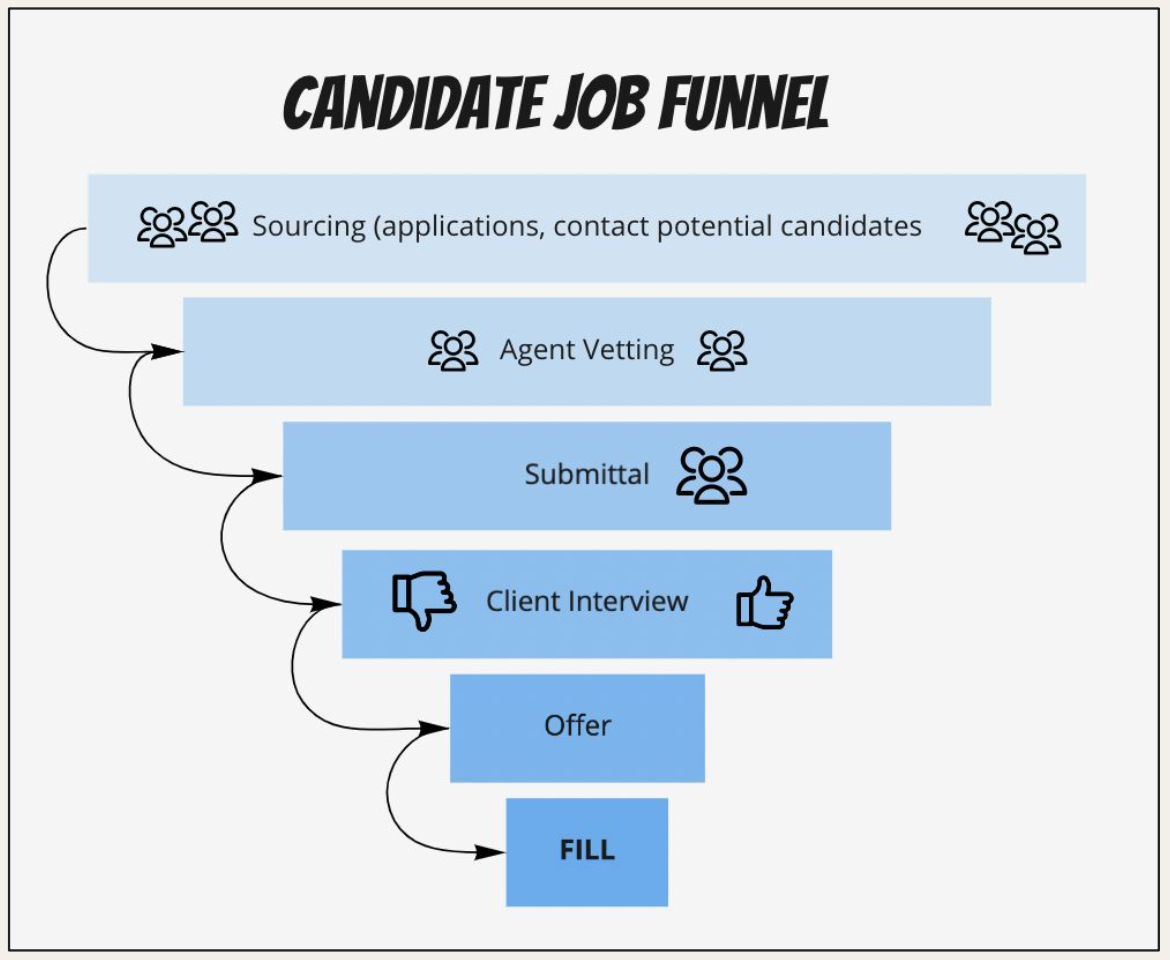Aquent: Candidate Stages
My Role: Product manager for an in-house tech and design team at a Global Staffing company.
Our team: Agile squad with 3 developers, 1 QA specialist, 1 UX designer and 1 agile development manager
Sprints: 6 one week sprints
MVP Launch: December 2021
Problem:
With a hot job market, the company’s 300+ recruiters were doing more work to get to one filled job. A legacy applicant tracking system that required numerous manual tasks to track their candidates blocked the recruiters from moving quickly through jobs. Our task was to create a better process to track the numerous candidates each recruiter had to manage for one job.
Potential Gains:
Recruiters can get a faster and clearer picture of their jobs in progress
Better transparency and collaboration between recruitment teams
Accurate candidate and job progress tracking informs us about business trends and changes
Discovery activities:
Surveys and user interviews
Personas
Comparative landscape analysis
Flow mapping
Competing applicant tracking Systems research
Led Squad brainstorming sessions
Comparative analysis and research of applicant tracking systems
Recruiter user personas
Ideation Phase:
From 6 slow clicks to 1fast drag and drop
I worked closely with our UX designer and developers to come up with a variety of different solutions. After user testing with our users, we decided on a Kanban style view with a simple drag and drop action to change a candidate’s status.
Simplified the process:
We cut down the 30 unnecessary or un-used candidate statuses and narrowed in to 5 core candidate stages: Interested, Submitted (to client), Interviewing, Offer, and Rejected. Each stage allowed for additional detailed information, but the more simplistic stages cut out the noise.
Design prototype
Mapping the recruitment funnel process
Pre-Launch Activities:
First-look and prep with Managers and influential recruiting leaders
Created FAQ docs, training resources, video walkthrough, and
kick-off slide decksLaunch meeting call with all recruiters
“Office Hours” and Q&A sessions with field
Facilitated a QA Swarm with the squad to ensure that the product launch would be smooth
Outcomes:
Recruiters can fill jobs faster.
The average time to fill a job decreased across the organization by 4 days. This allows recruiters to take on more opportunities at once, and move on to the next job quickly.
A more efficient process saved recruiter time and money:
Through testing the new Candidate Stages tool, we discovered that a single recruiter could save an average of 20 hours per year in time. By cutting down the manual effort to manage candidates in a job, we estimated this as a $150K savings in recruitment operational time over the course of a year.
User quickly adapted to the new tool:
By 3 months, around 80% of users had fully adapted to using the new tool for their candidate management. We received an extremely positive response through methods like Hotjar, feedback tracking, surveys- and the occasional “thank you” email.





